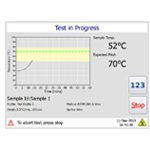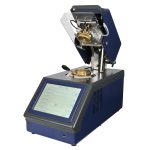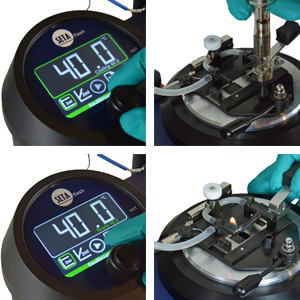The test method chosen must follow the stated requirements, however if this requirement is flexible then choice may be biased towards safety, cost, speed of test and even instrument availability. Below are important factors to consider before making your choice.
Safety
The need to heat and ignite potentially flammable liquids in a laboratory is naturally of concern and in many instances the use of a naked flame is prohibited. ASTM D3828 small scale flash point tests reduce the risk by using a small sample of just 2 or 4 ml.
Most test methods now permit the use of an electric ignition source as an alternative to the traditionally used gas flame. To satisfy laboratory safety requirements it is becoming increasingly important to ensure electronic ignition is available with reliable and proven performance.
Simple test procedure
Automated Pensky-Martens flash point testers have been designed to provide rapid testing of samples with minimal operator input. The Seta PM-93 allows unsupervised operation which heats the sample at the temperature rate prescribed in the test method whilst also applying ignition and checking for flash automatically.

Fire extinguishing systems
 For safety purposes a fire extinguising system is now mandatory for all ASTM D93 Pensky-Martens flash point testing apparatus manufactured after 2016.
For safety purposes a fire extinguising system is now mandatory for all ASTM D93 Pensky-Martens flash point testing apparatus manufactured after 2016.
Latest designs of instrument such as the Seta PM-93 now provide automatic fire extinguisher systems which monitor the sample and will automatically and immediately activate an integral extinguisher in the event of flame or fire being detected around the test cup.
Other safety features now recommended include a first dip before sample heating and an automated dip at every 10 °C, these additional safeguards check for the presence of excess volatile components and are included in the latest ASTM D93 Pensky-Martens method.

Ease of use
In today’s laboratory it is not unusual for technicians to run several tests simultaneously, so simplicity of use and automation are often key features required by users.
This is especially important if a large number of samples are to be tested and where test throughput is vital in supporting efficient laboratory operations, so in addition to ease of use, speed of use becomes critical.